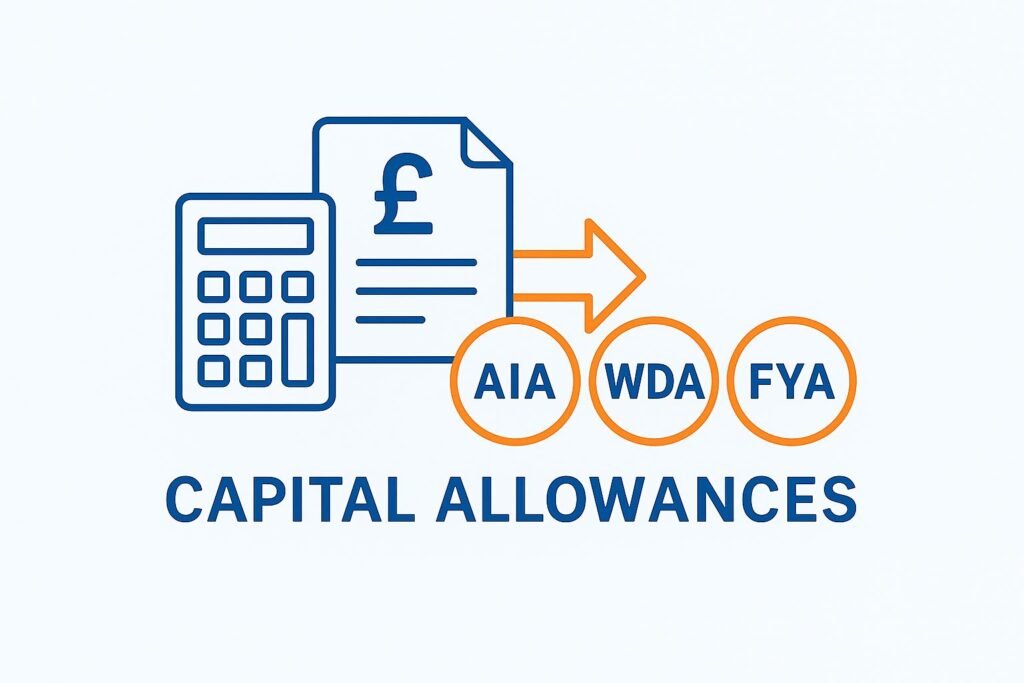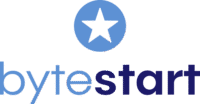
If you’re self-employed and spend money on equipment, vehicles, or improvements to your workspace, you may be able to claim tax relief through a system of ‘capital allowances’.
These allowances let you deduct some or all of the cost of certain assets from your taxable profits, which reduces the amount of Income Tax you pay. They apply to long-term purchases — not everyday running costs.
Capital allowances are important because HMRC doesn’t allow standard depreciation as a tax-deductible expense. So if you buy a laptop, van, or tool for your business, you can’t claim the depreciation value — but you might be able to deduct the cost using one of the capital allowance schemes.
This guide explains the main types of capital allowance available to sole traders in the UK, how they work, and how they differ slightly for limited companies (explained at the end).
1. Annual Investment Allowance (AIA)
The Annual Investment Allowance is the most generous and commonly used scheme. It allows you to deduct the full cost of qualifying assets – up to £1 million per year – from your taxable profits.
You can use AIA on things like:
- Tools and machines
- Computers, laptops, and office furniture
- Equipment used in manufacturing or production
- Vans and lorries (not cars)
- Fixtures and fittings in your business premises, such as heating systems, wiring, or display counters
What can’t you claim AIA for?
- Cars (though other allowances may apply)
- Items you used privately before bringing them into the business
- Assets you lease, not own
- Purchases made after you’ve stopped trading
If you spend £15,000 on a new printing machine and your total profit for the year is £45,000, you can claim the full £15,000 as a capital allowance. This means you’d only pay tax on £30,000.
The AIA limit has been permanently set at £1 million per year. Most sole traders won’t come close to hitting it, but it’s worth knowing in case you make a significant one-off investment.
Official guidance: GOV.UK – Claim capital allowances
2. Writing Down Allowances (WDA)
If your purchase doesn’t qualify for the AIA, or you’ve already used your AIA limit, you may be able to claim a Writing Down Allowance instead.
Instead of deducting the full cost in one go, you claim a percentage of the item’s value each year. These items are grouped into “pools” based on their classification.
Current WDA rates (2025/26)
- 18% for most items (main rate pool)
- 6% for long-life assets or integral building features (special rate pool)
- Single asset pools may apply if an item is used partly for personal reasons
Examples of items in the 6% pool include:
- Electrical and lighting systems
- Air conditioning, heating, and ventilation
- Lifts, escalators, and solar shading
If you claim WDA on a van worth £10,000 in the main pool, you’d deduct £1,800 in the first year (18%). The remaining balance is then carried forward, and the allowance applies again the following year — until the value is used up or the asset is sold.
You can check WDA pool rates on GOV.UK.
3. Cars and vehicles
Sole traders can claim capital allowances on business-use cars, but not through AIA. Instead, you must use the writing down allowance system — and only for the business-use portion.
WDA rates for cars:
- 100% first-year allowance for electric or zero-emission cars (0 g/km)
- 18% main rate for cars with emissions up to 50 g/km
- 6% special rate for cars over 50 g/km
If you use the car for both business and personal journeys, you can only claim for the proportion of business use.
For example, if your car is used 60% for business, and the allowance works out to £2,000, you can only claim £1,200 (60% of £2,000).
4. First-year allowances (FYA)
First-year allowances let you claim 100% of the cost of qualifying items — in addition to your AIA — but only for specific environmental or energy-efficient assets.
This includes:
- New zero-emission vans
- Electric vehicle charging equipment
- Certain types of water-saving or energy-saving equipment
These assets are listed on the government’s energy-saving technologies list, but most small sole traders won’t typically invest in this type of kit. Still, it’s worth checking if you plan to go green.
Note: First-year allowances are separate from AIA and do not count towards your £1 million AIA limit.
5. Research and development (R&D)
R&D tax relief is mainly aimed at limited companies, but sole traders are not eligible for the main schemes.
If you’re self-employed and working on an innovative project, the only option for claiming related costs is through standard capital allowances or allowable business expenses.
What if your business makes a loss?
If you claim capital allowances in a year when your business makes a loss, the allowances can increase your total loss.
You can carry that loss forward to reduce tax on profits in future years. This can be particularly helpful for sole traders making upfront investments during their startup phase.
Example:
If your trading loss is £5,000 and you also claim £3,000 of capital allowances, your total loss is £8,000. That amount can be offset against future profits, reducing your tax bill when the business becomes profitable.
Differences for limited companies
Capital allowance rules are broadly similar for sole traders and limited companies — but there are a few key differences:
- Limited companies pay Corporation Tax, so allowances reduce company profits, not personal income
- Companies may have access to extra schemes, such as full expensing on certain purchases
- R&D tax relief is available to companies, not sole traders
- Companies claim allowances via the CT600 tax return; sole traders use Self Assessment
More on company-specific rules: GOV.UK – Capital Allowances



